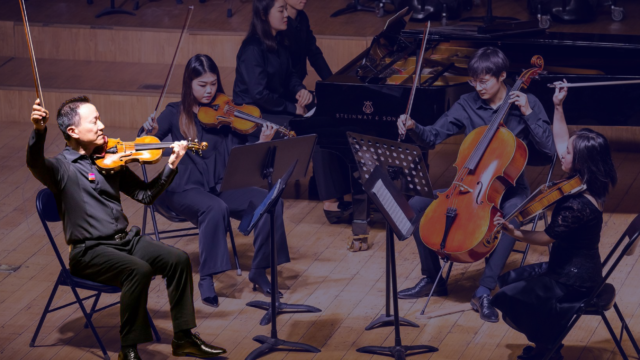Power of Inclusion – Lansing Symphony Orchestra: Communication Starts at the Top

Elinore Morin, Assistant Principal Viola of the Lansing Symphony Orchestra (LSO), recalls that the orchestra unionized in 2004 “because management was not listening. Suggestions were falling on deaf ears.” The orchestra went through a series of executives before landing on Courtney Millbrook. “Courtney was a breath of fresh air. The board has turned over, too. Now everything is about communication. Because we have dialogue, we can say more—and Courtney does too.”
Fifteen years on, the LSO has evolved a notably welcoming culture for musicians. A forthcoming strategic plan has a section devoted to “artistic vibrancy,” which recognizes the importance of people feeling included, fostering retention. Millbrook also credits Finance and Operations Director Karen Dichoza for working closely with the musicians and ensuring their communication with management.
It starts with the audition process, which aims to be highly transparent and provide auditioning musicians with congenial warm-up space and a comfortable, low-stress experience. “We get compliments for the way musicians feel respected in the audition,” says Morin.
Morin calls Music Director Tim Muffitt highly collegial. “He lets us play,” she says, in contrast to prior conductors so intent on nuance that musicians felt constrained. “And he knows everyone’s name,” she adds. “He makes a point of greeting new members of the orchestra individually during their first concert cycle.” That contributes to the positive feeling on stage.
When an important announcement comes out—for instance, Muffitt’s imminent retirement—Millbrook makes sure the musicians hear it first. And every musician has a head shot and bio on the LSO website. They are all seen.
Musicians have input on chamber music programming, and those contracted for fewer orchestra services get priority for chamber performances. Morin notes that the contemporary music series often entails unusual combinations of instruments, bringing musicians together with colleagues they might not usually work with.
Onstage dress code can be challenging for nonbinary musicians, so LSO has done away with traditional white tie and tails versus long gowns. But Morin notes that the shift to all-black outfits of one’s own design is as much generational as gender-based. The most important thing is a culture where people are comfortable asking about their options and expressing their preferences.
Photo: The Lansing Symphony Orchestra’s upcoming strategic framework recognizes the importance of making people feel included, to both retention and artistic vibrancy. Here, Assistant Principal Violist Elinore Morin embraces violist Linda Gregorian on the occasion of her retirement after more than 40 years of service. Photo courtesy of the Lansing Symphony Orchestra.
Related
-
Learn | Equity, Diversity & Inclusion
Discover the Power of Inclusion in Orchestra Culture
-
Learn | Equity, Diversity & Inclusion Member-only Content
Discover the Power of Inclusion in Orchestra Culture
-
Learn | Equity, Diversity & Inclusion
Catalyst Guide: The Power of Inclusion
Become a member
Thank you for your interest in the League of American Orchestras! We are dedicated to advancing the orchestral experience for all.
Join Now

